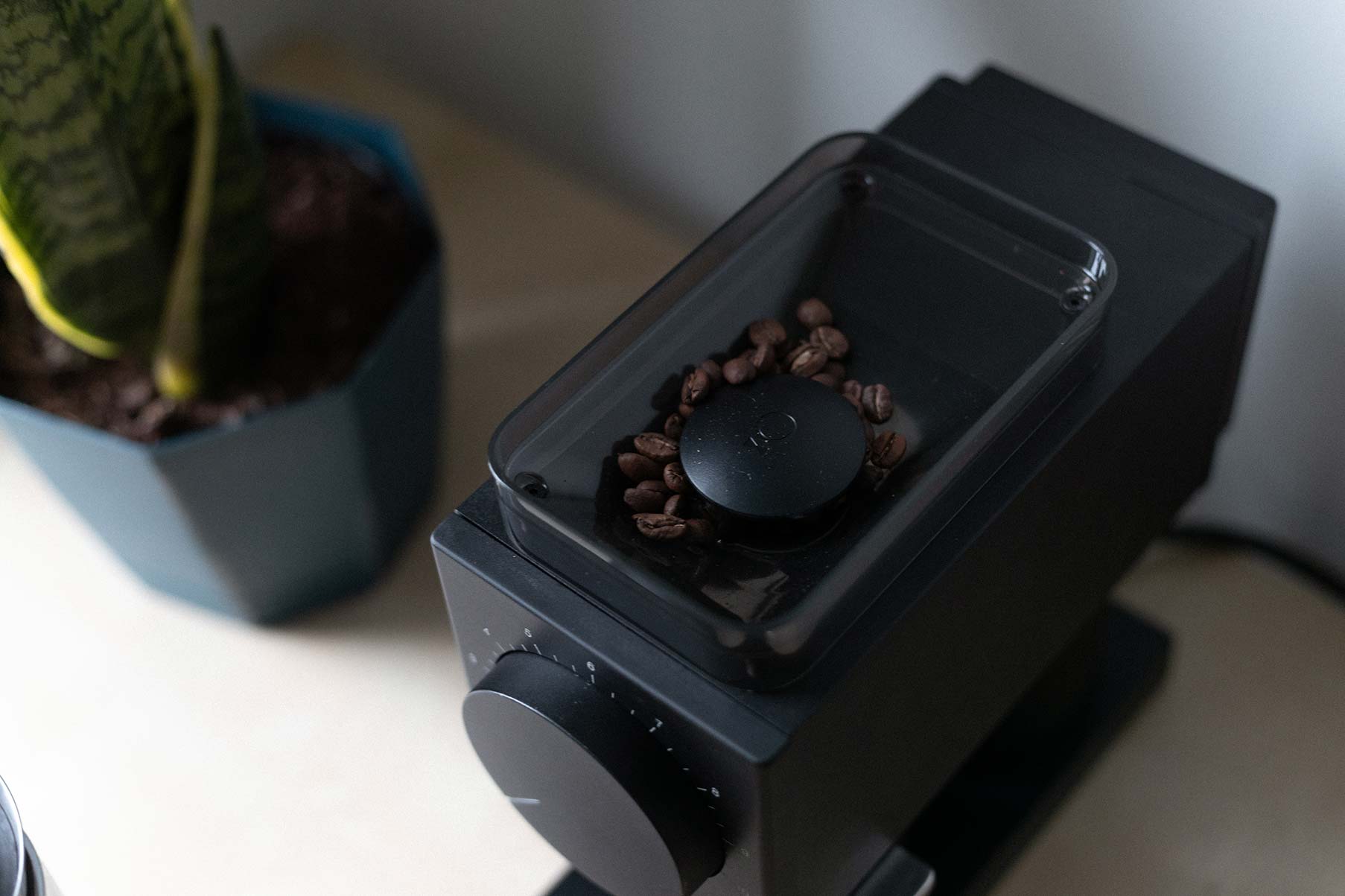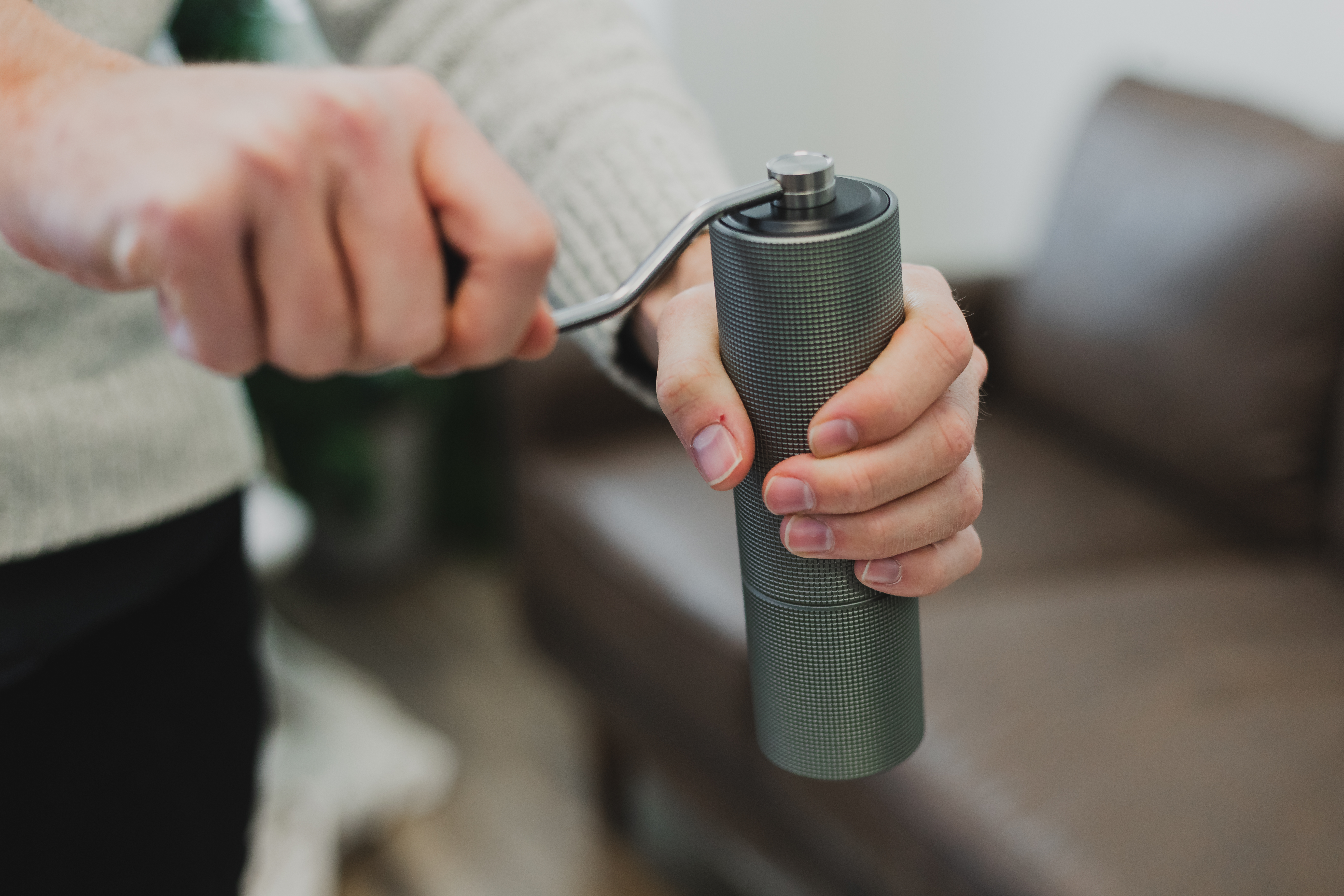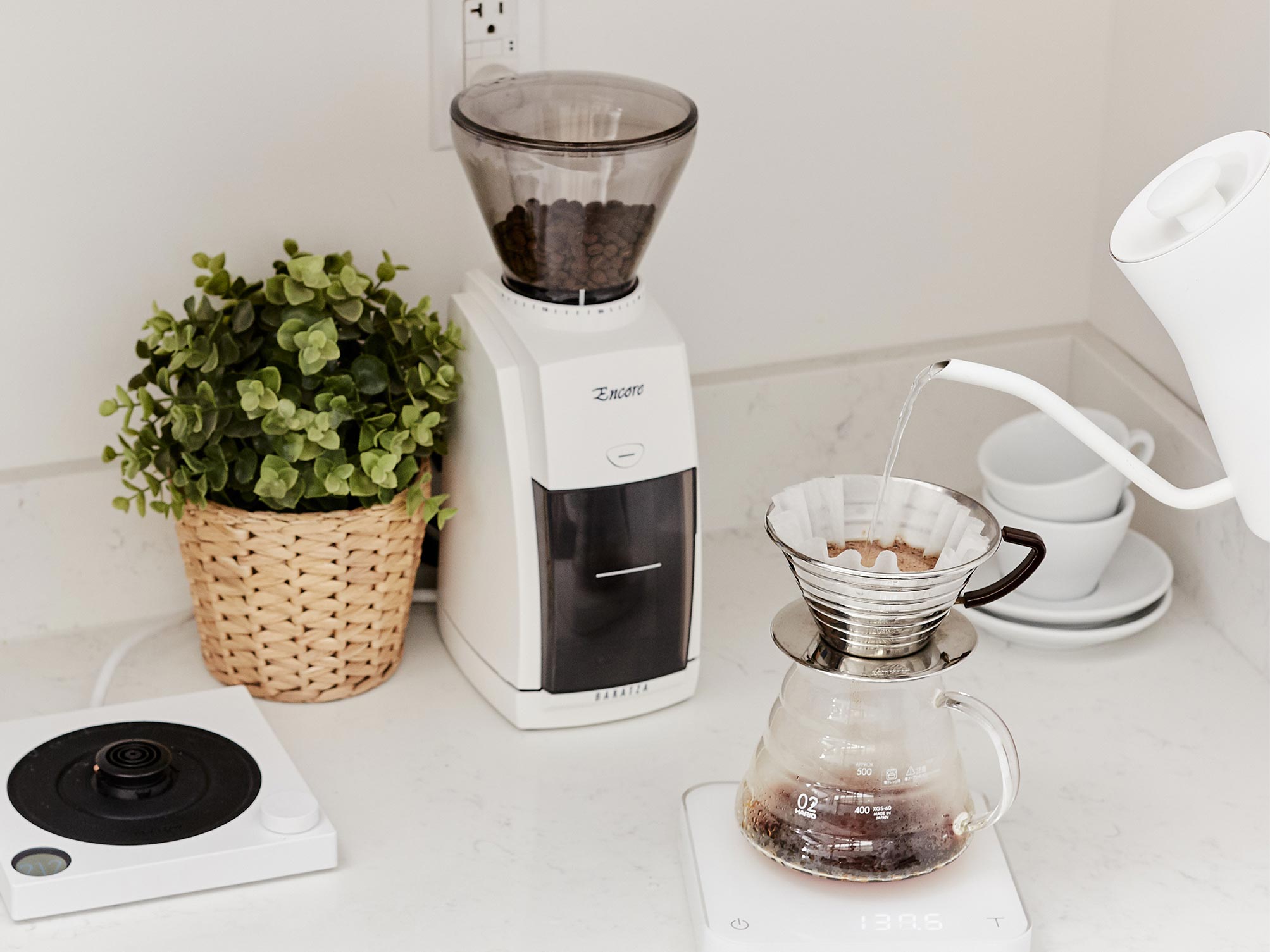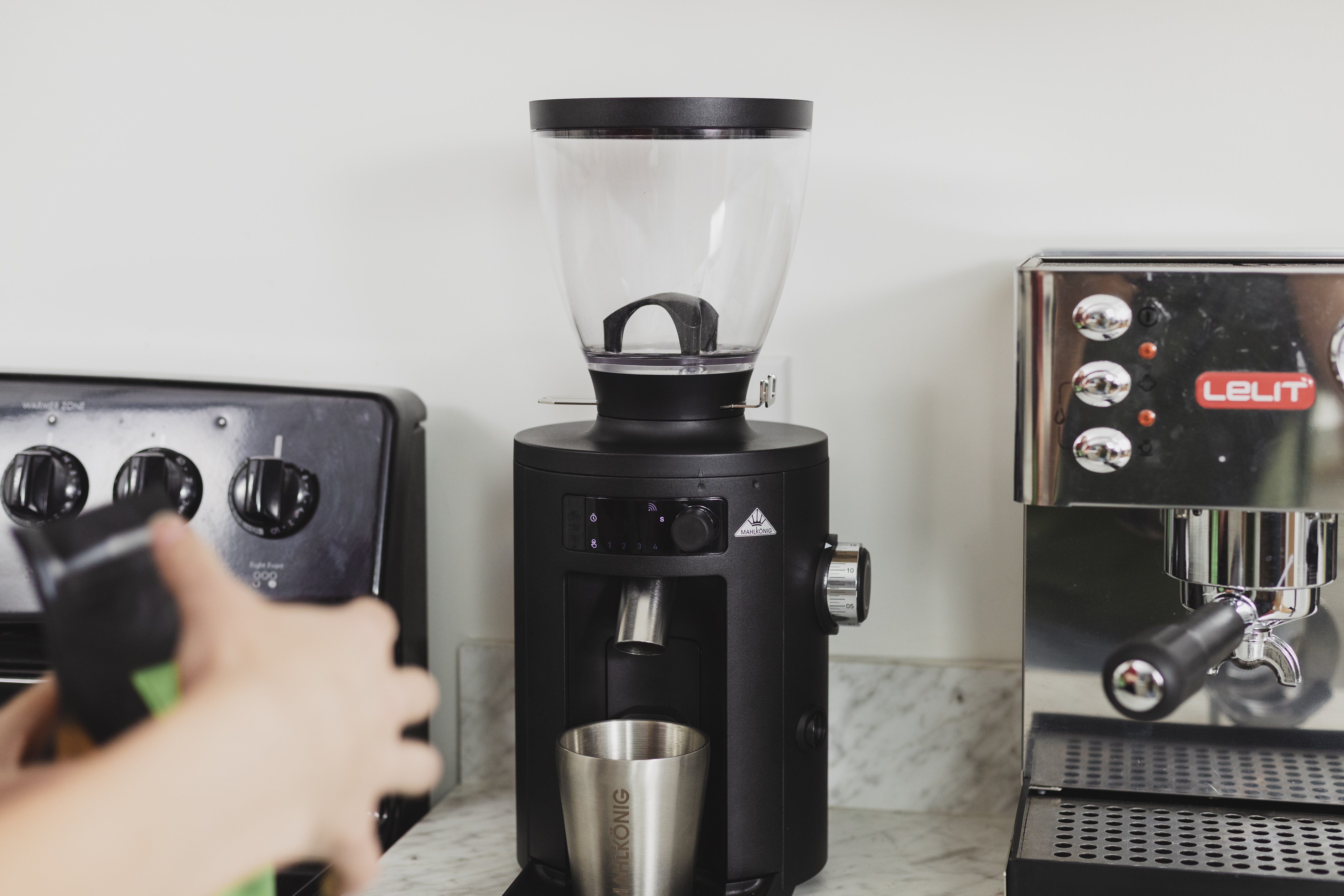How to Buy the Right Burr Grinder
Buying a new burr grinder can seem like an intimidating task, but it shouldn't be! Follow our three tips to simplify your choices and help you pick the right grinder for your needs.
The Short Version: Three Tips for Buying a Burr Grinder
- Manual or Electric: Often the case is that there’s more bang for your buck when grinding by hand. Many manual grinders have better performance, parts and construction than a similarly priced electric grinder. This does of course mean that you forgo the convenience of grinding electrically, which includes leaving aside other convenience features like being able to keep a stock of beans in your hopper. There are plenty of trade-offs to consider, but if your goal is to get the best grind quality for your dollar, check on the hand grinders in your budget range first.
- Espresso or Filter Coffee: What do you want to brew? When it comes to coffee brewing methods, espresso is well-known as being finicky and picky about grind quality. Espresso’s brewing pressure amplifies a good many things, including any faults in your preparation like a lackluster grind quality. That being the case, it’s advisable to spend a bit more on a grinder with features that make your life easier when brewing espresso - things like stepless grind adjustment, better burrs, and not-so-obvious factors like better grind uniformity. Of course, if you’re not making espresso, you can ease up on worrying about this sort of thing, and the grinder world is your oyster. Almost any grinder we’ve recommended here will work well for brewed coffee, and the exceptions are generally well-labeled as being designed specifically for espresso.
- Consider the Upgrade Path: Are you planning on buying an espresso machine down the road? Thinking of buying a better grinder once you’ve got the money? Considering what your upgrade path might be is an important part of buying a grinder, and can save you from buying more products than you need to. After all, if you save up a bit more and buy an espresso-capable grinder now, then you’ve only bought once—instead of buying twice if you buy a cheaper model now and have to replace it later on. This can be a good way to save money in the long run, and generally more expensive models will also have better build quality and a longer life to them. If you think you’ll need or want a feature down the road, consider investing in it now.
The Longer Version: Here's What to Consider When Buying a Grinder
You probably know by now that we’re pretty enthusiastic about burr grinders. We’ve found that they’re much better for your coffee than a blade grinder, and they come in all shapes and sizes to suit almost any budget—from the littlest piggy bank to your average billfold. That’s all well and good, you’re convinced you want a burr grinder! But there’s one important question standing in the way of you and coffee Shangri La: where the heck do you even start looking when you want to buy a burr grinder, anyway?

You’ve come to the right place, and to answer that question we only need to answer two smaller, easier questions: what do you want to brew, and how much do you want to spend? You see, while there are copious options for grinders out there, with all kinds of features and whirligigs and whoozats, the simplest way to winnow away the chaff is to ask yourself what you plan to do with the grinder, and what you want to budget for it. After that, most everything else falls right into place, and you’re able to look at a much much smaller list of options with a good deal more clarity.
While talking about money may seem like the boring way to start this off, we actually find that budget is one of the single most limiting factors for our customers when it comes to finding the right grinder. The value of a grinder is something that many folks just getting into coffee have a tough time placing. If you’re used to the $25 blade model you got from the corner store, you might have to jack your jaw up off the floor when you see the price tags of some of the models we carry at Prima. But we promise, there’s a reason some of these products are pricey, and there’s a reason we try to carry a broad range of options to cover most price points. With burr grinders, you by and large get what you pay for, and there are significant improvements to be found between a $50 grinder and a $500 grinder.
To put things in perspective, let’s break down some price categories and take a look at what your money gets you in each. Say, for example, you can’t decide if you want to budget $50–100, $100–350, or if you want to go all out and save up $500–1,200 for your grinder.
In the $50–100 range, and slightly below, there aren’t an awful lot of options if you want to start making better coffee. This is the price range most consumers are used to, but sadly it’s where you’ll find a lot of junk. For that reason, we recommend sticking to hand grinders, and look for models with either ceramic or steel conical burrs. We carry three options: the Mini Mill and Skerton from Hario and the C2 Max from Timemore. All are solid hand grinders that work well on a budget, they’re travel friendly, and they’re adjustable for a wide range of grind settings. While we wouldn’t exactly recommend them for espresso or French Press grinding, they’ll really shine for brewing an AeroPress, V60, Kalita and other pour over and immersion brews. Any of them would be a good first grinder.

Electric grinders are a bit tricky in this range however, because there are some wolves incognito amongst the sheep. We’ve talked a bit before about false burrs and what they do to your coffee. If you see something advertised as a burr grinder for under $100, be wary. Check to see if they’re real, sharp burrs, or if they’re dull and nubby. If you can, exclude your searches to conical steel burrs, as they will get you the best results for your money in this price range. With a little luck and some bargain-hunter savvy, you could net yourself a great deal on a great grinder for $100 or less.
Moving up to the $100–350 range, the clouds clear a bit and you’ll find radiant little sunbeams in the form of real, solid options for burr grinders of all kinds. This is the price range the vast majority of great consumer grinders falls in, and if you can dig in those couch cushions for the change, you’ll be spoiled with selection here. Brands like Baratza offer a range of grinders to choose from at this price point; electric models with great burr sets, high-quality grinds, and rock-solid construction. Their Encore conical burr grinder is a fantastic starter grinder capable of grinding a full range of sizes, including drip and press, and the Virtuoso+ is just one step ahead in price and performance. Beyond Baratza, there are some amazing hand grinders like the Orphan Espresso LIDO 3, 1Zpresso J-Max and all models from Kinu for espresso and grinders from Timemore, Comandante, and other manufacturers for brewing. In fact, if you don’t mind grinding by hand, going manual can be a great way to get even more value for your dollar. When it comes to hand grinders, they often have even better burrs and grind uniformity than the electric equivalent, because they save money on electronics and put it into construction instead. Granted, manually grinding enough for a few large batches of coffee can be tedious, but for day-to-day use and low-volume coffee drinkers, it’s a no-brainer to go for the better quality grind. Plus, grinders like the LIDO 3 are capable of grinding for espresso as well as drip and press, so they’re an excellent way to break into espresso on a budget.

When it comes to grinding at home $500–1,200 is essentially the “sky’s the limit” price range for most consumers. It’s some serious money to put down on a kitchen appliance, but as we said before—you really do get what you pay for when it comes to grinders. Under $1,200, you aren’t quite seeing any diminishing returns on your money, as there are better burrs to be had, even better grind uniformity, as well as convenience features that make your life easier and your brewing workflow smoother. And chances are, if you’re thinking about spending this much on a grinder, you’ve already fallen deep down the rabbit hole and you’re pretty crazy about your coffee—just like us!
In this price range, you start to see some pretty nifty convenience features thrown into the mix, as well as some stronger specialization for brewing methods. One of the clearest examples of this is the Baratza Forte, which comes in two flavors: the All-Purpose (AP) model, and the Brew Grinder (BG) model. The difference lies in the burrs: the AP uses a set of ceramic flat burrs better suited for espresso and drip grinding, while the BG uses steel flat burrs which shine more in the drip to press range. Both models feature micro-stepped grind ranges, making for easy dialing in across all grind settings, metal body construction for heavy duty usage, a shut-off hopper for easy switching between beans, and grind-by-weight technology so you can get the perfect dose without breaking a sweat.

Baratza is on the forefront of grind-by-weight tech, having introduced if not entirely invented the concept with their Esatto add-on some years ago, following up by building it right into the Vario W and now the Vario-W+. With grind-by-weight, you can tell your grinder what your desired dose will be, regardless of the grind setting, and the grinder will nail it within one gram every time. The trick is that the grinds chamber is freestanding on top of a load cell in the base of the grinder, meaning the grinder knows just how much coffee it’s ground, and can predict the proper stopping point so you get just the right amount of ground coffee you need. We’re only just now starting to see commercial grinder prototypes with this sort of thing built in, and Baratza beat them all to the punch. This is timesaving tech, so you can still brew with your favorite ratios without having to manually weigh out your beans or try to figure out how to grind onto your own scale. Of course, this sort of thing comes at a bit of a premium, and you’ll be paying close to $1,000 for the convenience of having an already excellent grinder with weight-sensing built in.
This price range is also where you’ll find some rock-solid specialists that may not have been your first pick for home use. Enthusiasts and home baristas are already familiar with Mazzer and Mahlkönig. A grinder like the Mazzer Mini Electronic is compact enough for your kitchen counter (though admittedly about as bulky as your average stand mixer because it was made for the café), and has the power and the burr set to crank out shot after shot of espresso excellence. The electronic dosing controls grind by time, and right into your portafilter, allowing you to set two distinct settings for singles and doubles, or use the pulse control to go full-manual. Mahlkönig's X54 is a compact all-purpose grinder with the look of the company's espresso grinders. It comes with interchangeable front pieces: a portafilter holder for espresso and a cup holder for brewing.



